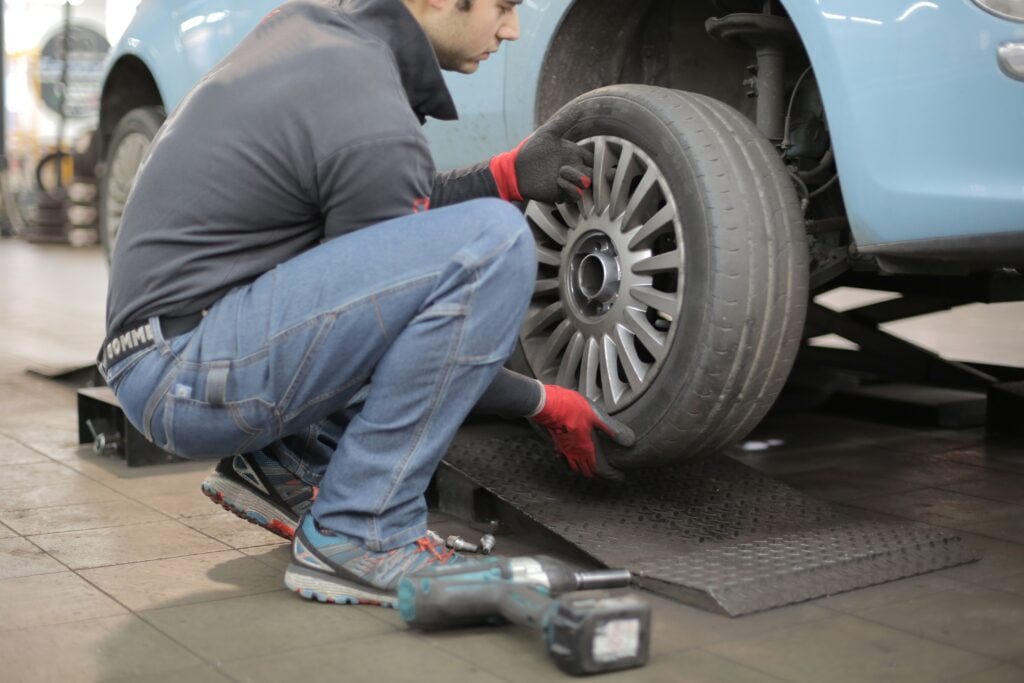Summer might seem to be the least likely time for more tyre-related incidents to be reported on Britain’s roads – yet June, July and August are when they are most likely to occur.
Longer journeys with extra passengers and luggage on board puts additional strain on tyres – and if they have any defects, they are more likely to suffer a catastrophic failure or ‘blowout’.
To minimise the risk takes just a few simple checks. Have a good look at each tyre and see if there are any signs of cracking in the sidewall or in the tread. This cracking is a sign the tyres are hardening, reducing grip and allowing moisture to seep into the tyre and cause its metal components to rust and weaken. It’s essential to have them checked by a professional if you see any signs of this type of ‘crazing’ effect.
A bulge in a tyre indicates its inner structure has been compromised. Typically, this happens when it’s kerbed and the radial wires in the tyre are cut as the wheel rim pinches them against the kerb. Without that essential structural support, only rubber keeps the tyre from bursting, which is extremely dangerous. Again, you should seek a professional’s opinion if you spot a bulge in any of the tyres.
However, the most common fault is underinflation of the tyres – in other words, not having the pressures at the setting recommended by the vehicle manufacturer. Research shows 57% of tyres are underinflated on Britain’s roads. Add in extra weight and longer distances and there is an increased risk of failure.
The pressures of a vehicle should be set according to the weight it is carrying. Inside the driver’s door shut, filler cap or handbook, there will be at least two settings recommended for each wheel and tyre size available for that vehicle. For family holiday travel, it’s typically the higher pressure that is needed but refer to the vehicle manufacturer’s recommendation to check.
Another crucial check is to see whether you have a spare wheel before you start packing. The vast majority of cars come with a ‘space saver’ or an emergency puncture repair kit which includes a cylinder of fluid to be connected with an air compressor. These are designed only for short term and low speed usage – maximum 50mph for 50 miles – to get you to a tyre outlet where the issue can be dealt with properly.
Remember, you should never change your wheel by the side of a motorway or dual carriageway.
One final check is to ensure all tyres have more than 1.6mm of tread to stay legal. However, if they are below 2mm, it really is time to start thinking about replacing them, especially if you are off on a long journey.
Stuart Jackson, TyreSafe Chair, said: “Britain’s roads are never busier than during the summer months, which leads to congestion, hold-ups and traffic jams, which we can’t do anything about. But we can minimise the chances of having an unwanted stop due to tyre defects by carrying out checks before we set off. They only take a few minutes.
“Remember to ACT – air pressure, condition and tread. Don’t let your tyres ruin your summer holiday.”




4 comments
This is so important, we slid right down a hill once out of control, never again.
I find I get uneven wear on my tyres. I think it is due to driving through pot holes
Maintain Proper Tire Pressure: Adjust tyre pressure based on the vehicle’s load. Refer to manufacturer recommendations for the correct settings, typically higher for family holiday travels.